The Walking Dead

What if blood ran out of your ears every time you damaged your hearing? Kids with earbuds, volume cranked up, would have blood streaming down their necks. People coming out of rock concerts would look like the walking dead. But you might be more careful about your hearing if you could see or feel it when you hurt it. Hearing loss is invisible, and the damage you do today adds to the damage you did yesterday, like another brick in a wall, until you realize you’ve trapped yourself in a silent, masonry-walled room.
Hi! I’m Noël Thayer, the audiologist who answers questions about hearing for Puro Sound Labs. I reached out to Puro Sound Labs because I believe so strongly in what this company is doing to help raise awareness of noise induced hearing loss, and to give families the tools to avoid it while still enjoying the real world of music and videos and cellphones. When I saw the first ad for Healthy Ears headphones, I was so excited. Finally, cool wireless headphones, well-made, with quality sound that won’t damage ears! I called the company, checked out the claims, and here I am, writing a blog for them.
Ever since I began my audiology career eighteen years ago, I’ve been on a mission to protect people’s ears. I see so many patients who are missing some of life’s most wonderful moments because they can’t hear well. And it’s not only older folks. In fact, it is a misconception to think hearing loss is confined to the elderly. The majority of my patients are well under retirement age, and I see more and more teenagers with hearing loss. It’s becoming an epidemic.
While there are other causes of hearing loss, (e.g. from genetic factors, chronic ear infections, diseases that affect the ear, or trauma) there is no doubt that young people are damaging their hearing listening to music and video games at excessively loud levels. I can see it on their audiograms. Hearing loss caused by noise exposure often has a telltale shape. It’s called a “notched” pattern. The audiogram starts out nice and flat, indicating hearing sensitivity at perfectly normal levels until it comes to the high frequency range, and it drops off, right around 3000-6000 Hz.
A person with this type of hearing loss may not realize it for years because the damage usually happens gradually over time. Also, he or she may still be able to hear many sounds quite well. It is often only the softer, higher frequency sounds that are missing. The person will complain that other people are mumbling because he/she cannot hear the unvoiced consonants such as s, f, and th. They might be able to hear footsteps or a knock at the door but, speech sounds muddled and muffled. Think of how frustrating it would be to hear but not be able to understand!
This is such a shame because noise induced hearing loss is 100% preventable. It’s like sun tanning and skin cancer, or smoking and lung cancer. We have known for a long time that one causes the other, but it took decades for us to start using sunscreen and stop smoking. Let’s not let hearing loss be another decades-long awareness campaign. I know the analogy of bleeding ears may be a little off-putting, but I hope it will help to get the message through to more people: if we protect our hearing now, we will be able to listen to the music and other sounds of life we love longer into the future.
Start today by buying some great Healthy Ears kids wireless headphones from Puro Sound Labs. The volume-limiting model for kids is fabulous, and they are coming out soon with a Healthy Ears model for adults as well.
If you have any questions about hearing loss or the Healthy Ears products from Puro Sound Labs, please go to the “Ask Our Audiologist” page on this website. I’ll be happy to chat with you!
About the Author
Noël Thayer is a professional audiologist, licensed in the state of New York, with a private practice in Bronxville, NY. Her interest in the field was sparked as a child by spending time with her cousin who used hearing aids. Noël spent years working at several large hospitals and ENT clinics with some of the most preeminent professionals in the field to prepare herself for opening her own audiology practice in 2005. She offers advanced audiological solutions to patients of all ages. Her resume includes: Fellow of the American Academy of Audiology since 2004; Certificate of Clinical Competence in Audiology from the American Speech-Language Association since 1997; New York state-licensed in Audiology and Hearing Aid Dispensing since 1997; Adjunct Professor at Iona College in New Rochelle, NY since 2010; M.A. in Audiology from University of Massachusetts, Amherst in 1997; B.A. in Speech-Pathology and Audiology from Loyola College in Baltimore, MD in 1994.

